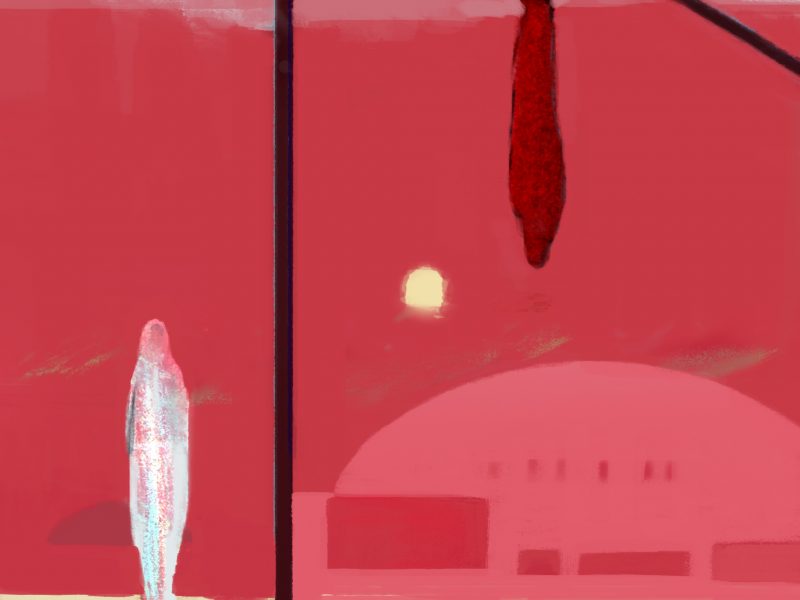
Monica Vitti and Michelangelo Antonioni once shared a dome house on the island of Sardinia.
When I was a kid my family was friends with a family who lived in a dome house. It was actually a series of domes, like hollowed out grapefruit halves. At the time it impressed me, because it seemed like a modest Star Wars kind of structure.
This house of a small-town family was an unmoored echo. This dome sat surrounded by cacti but architecturally alone, and it hummed of a lineage its boxy neighbors had no relationship to. These modest domes hummed of the Hagia Sophia and wigwams, cupolas and orthodox churches, architectural collisions of mysticism and mass production.
I get the appeal, but I would never want to actually be an architect. Like so many with the potential for revolutionary beauty, the profession in its current form, seems to be patrolled by people with money and an interest in keeping control.
I’ve gone to more than a few museum exhibits that tell tales of architecture as a harnessing of magnetic, magical forces. Homes and public buildings can be labyrinths which reflect the complexity of our inner feelings and the natural world. Spaces can amplify already existing stories and tell their own. Material speaks.
But the fact remains too many of us spend our lives in linked and stacked boxes.
If you want to build a dome, one way is to cover a large balloon with concrete and then inflate it. When the concrete hardens, the balloon is removed and doors and windows are cut in.
Every room, whatever its shape, must have an doorway.
But what is a doorway but a protected point of entry? Anything that shifts between two spaces can be a door.
Who’s to say this sentence, for example, isn’t, in a sense, a door?

The working title was sky blue and green.
Then it was yellow smoke and red drums.
In notes he sometimes called it simply post war.
The director had the cinematographer linger on industrial details. He transformed the canned beans and tinned meat into still lives. Bomber jackets and jumpsuits hanging in a Quonset hut appeared to glow under their velvety attention.
The building was half circle in the red light. Just its outline evoked the period. In that time after so much destruction there was a great need for prefab structures.
Post war was irony tinged, in the sense that the country was involved in various wars thought the period, throughout the world. Post war was the director’s joke.
The term was meant to sooth.
It communicated relief. A promise of starting over.
The story was of a leaf turned. A dove released.
The realities were such that denial was encouraged.
She remembered solders coming to her town because they’d heard some kids were being sheltered by residents. They were. The soldiers sent their dogs into the fields to run down the kids. They did. They tore them apart.
She and her grandmother had to use a basket to gather the remains.
Look over here. Look over and over look.
Forget the blood of kids on the jowls of dogs.
Return society to order.
Do so, whatever the cost.
She was a beautiful woman, really astonishing. This doesn’t make a difference I guess, but its why she was in film.
She goes walking with her son near her husband’s plant. Her son worries the birds will die from the yellow smoke. She promises that the birds have learned not to fly through it.
She doubles over, or doubles. An amorphous pain rises up from somewhere.
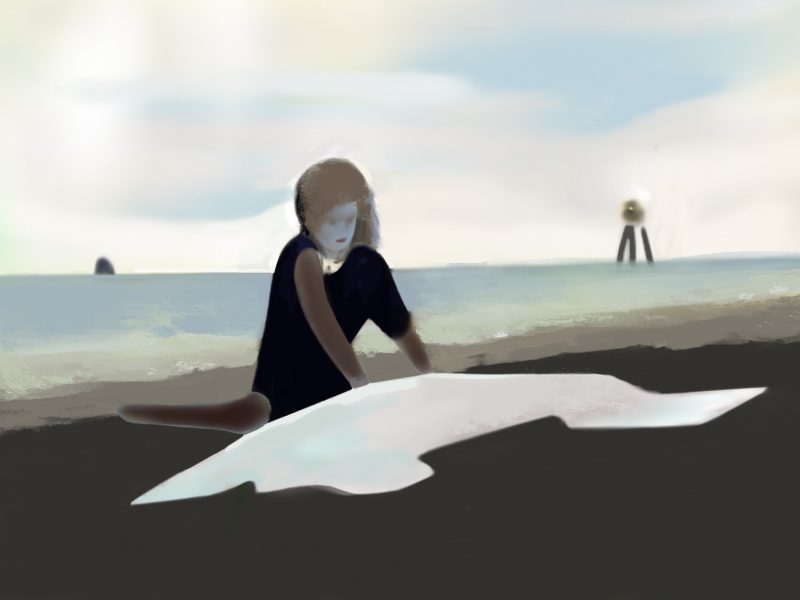
After the war attention shifted from what could be sacrificed by the individual, to what could be sold to the individual.
What could people sell one another?
What couldn’t they?
The post war period produced such an excess of things that people were still working through the heaps well into the next century. Thrift stores were sites of excavation and examination.
The sheer quantity of sheer clothes. All that poly and nylon. All those stripes and abstract lines, vulgar reds against technicolor azures. A yellow satin jacket with knit collar and cuffs.
Acquiring used clothing was a pastime. She used them to made herself painting like. She dressed herself well in used things. Which is the say she dressed like someone who’d ransacked the luggage of a rich woman who’d been lost at sea.
She sought natural fibers. Ones she could wash privately, without resorting to poisonous dry cleaning. Natural fibers released their smells with soap and water, whereas synthetics seemed to hold on forever to the stink of old body salts and department store scents.
She attempted to refuse the churn of the new.
But she knew everything was still dirty, cottons meant slavery and soil degradation. Most every fiber was dyed with anilines which turned rivers foamy toxic. That the fish knew where not to swim was a childish fiction.
As a child she’d wanted a magical something or someone to swoop in and save her.
She was— or a part of her was—still trapped on the island of her past, scanning for some passing vessel, wrapped in the princess seamed emerald coat of a dead woman.
Dress for the shipwreck you want, not the one you have.
She closed her eyes and waved.
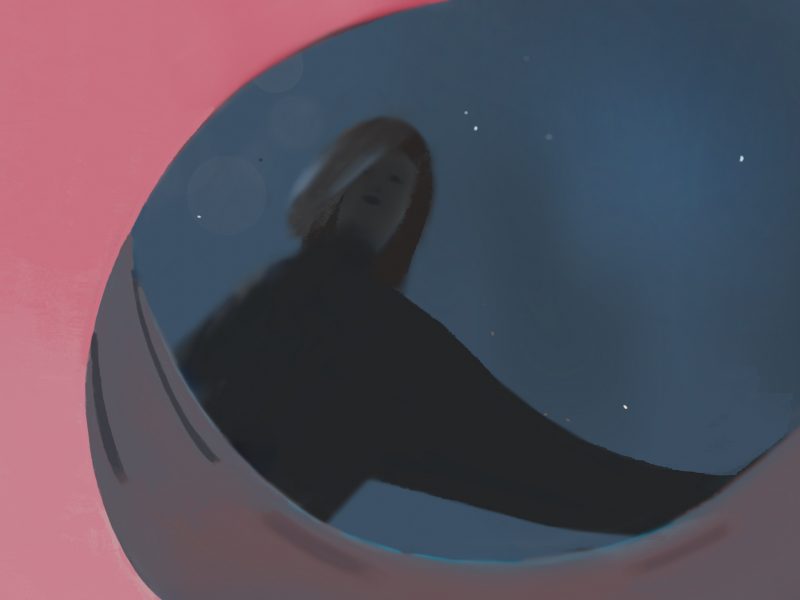
After some questioning the police let the smugglers free.
The police’s pressing concern was for the missing woman.
Smugglers are not experts in disappearance, they concern themselves with transference and disguise. Hide the pills in hollowed out fruit. Encase the cigarettes in an iced cake. Create nesting dolls with consumer goods.
The smugglers didn’t know about turning someone into thin air, they knew about concealing something forbidden within something commonplace. The difference is profound.
Disappearance implies death, but somehow its worse because there’s no confirmation, no body.
A scene is missing. The one that explains.
The shoot began in August and went on until January, and in that span, everything folded in on itself. Her vanishing was only the dénouement.
The crew never imagined form would mimic the content so faithfully, but such is the nature of echoes.
When they landed on the island they were fifty, but with each new challenge the group shrank.
The place they had to stay contained more rats, lizards, and mosquitos than blankets, dishware, or chairs.
They huddled and grumbled as they poured the wine into the few chipped mugs. Someone said the government had interned leftists on this island. Others nodded solemnly.
It was hard to take. Everyone could admit that. But it was this same comradery that prevented anyone from telling the others they were going to flee. People would say they were going to town on an errand, then never return.
The ferry they relied on came and went sporadically, though it was supposed to cross daily.
The ones who stayed would rush to the dock whenever the ferry appeared. They’d stand waving like crazy people.
“You’re here,” They’d sigh when they caught one of their own returning.
“Of course.” And all would laugh because they knew returning was far from given.
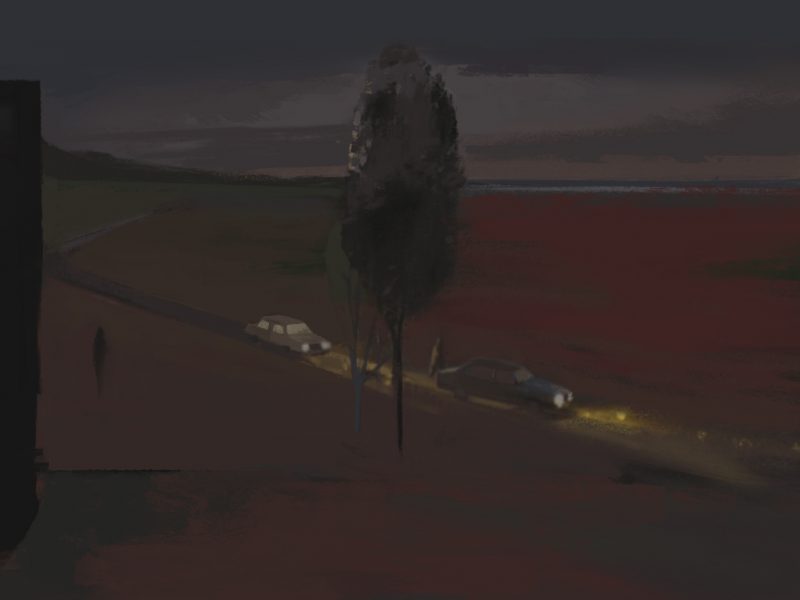
The film asks, who are we after the war? Who are we when the wars never end?
A scene is missing. The one that explains.
Italy—like the United States, like England— took official pains to construct a version of history in which they were victims rather than architects or supporter of violence. They wanted to erase the fact that one may be both participant and victim, just as a body can be in and out of shadow.
Narratives of vulnerability belies active phases of aggression. The chemical weapons, mass rape, and torture. Some crimes prompt tribunals while other spur cover-ups. But even with forceful suppression guilt an angst bubbles up. It rises with minimal effort.
It depends on which way the wind blows. It depends on who won.
Yet every construction contains also traces of what it was built over.
A stranger die, and in an effort to shed his own skin a journalist takes on the dead man’s identity. But with that acquisition he sheathes himself too in the karma of the other. The stranger was destined to die. When the journalist stole the name, he got the destiny.
The man disappears within another man whereas the woman disappears altogether.
Around a construction site of a never to be completed sacred building, they wander.
Blue light from the stained glass. Cut glass light from the sun reflected off the sea. An outcropping of red rocks. She wore a white tee-shirt which turned her into a silhouette against the buildings deep shadows. The wind moved unrelentingly from the south. One could tell it always came that way because the pines all grew at slant. Off the coast the smugglers boats appear miniature, like corks in a pond.
The woman leans far over a well and drops a marble stone.
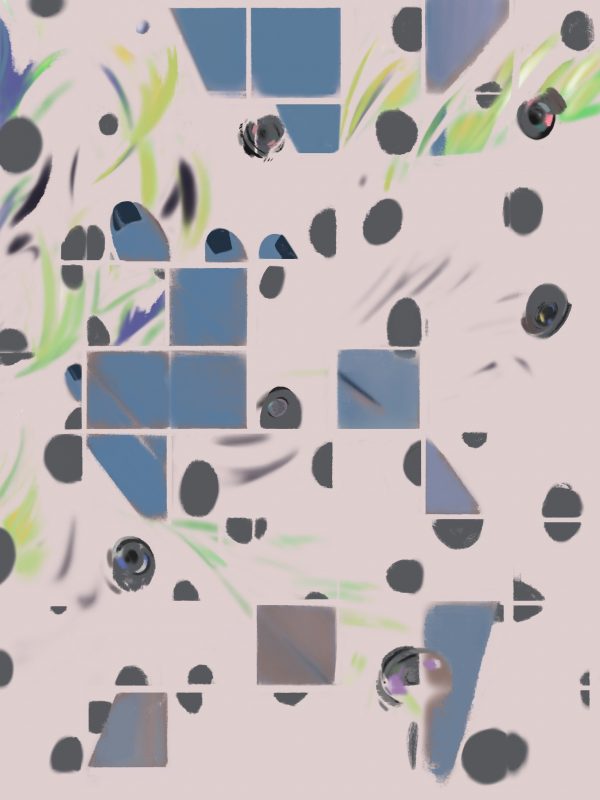
Her aunt kept a picture of the old dead dictator. She wreathed the frame in faux yellow roses. Visitors didn’t mention it. Everyone agreed her aunt was a nice lady.
Her grandmother even, seethed when she saw the image but said nothing.
Later, she heard her grandmother fretting about it to the kitchen sink, or perhaps to the birds outside the window.
She became famous because people recognized in her something warm and skeptical. They recognized themselves. She possessed a hoarse voice and a joyful personality. But on film she projected despair better than anyone. She projected a knowing look, one that seemed to say that the modern world, this one after the war, was still in the business of crushing beings.
She seemed to know this, and that gave those who watched permission to know it too.
She invited everyone into a round house, a bubble of melancholic awareness.
She feared flying, otherwise she would have become a bigger star. Requests poured in from directors around the world, but most would have required transatlantic travel.
She never minded boats.
Islands she adored.
She and the director quit the city in favor of the island in the cool of the off season. Beside the ring road some men trimmed the palm trees of their dry fronds and their half dry ones as well. Only the greenest, most alive, were allowed to stay swaying. Brown rustling heaps accumulated below as the men sawed away above.
They played tennis behind the shuttered hotel and took walks along the unlit beach.
“How could she? How could she?” He wrote into his script, confidant that she would bring the lines to life. A scene was still missing, one that would explain.
“How many polite silences must one gather to make one volley of gunfire?”
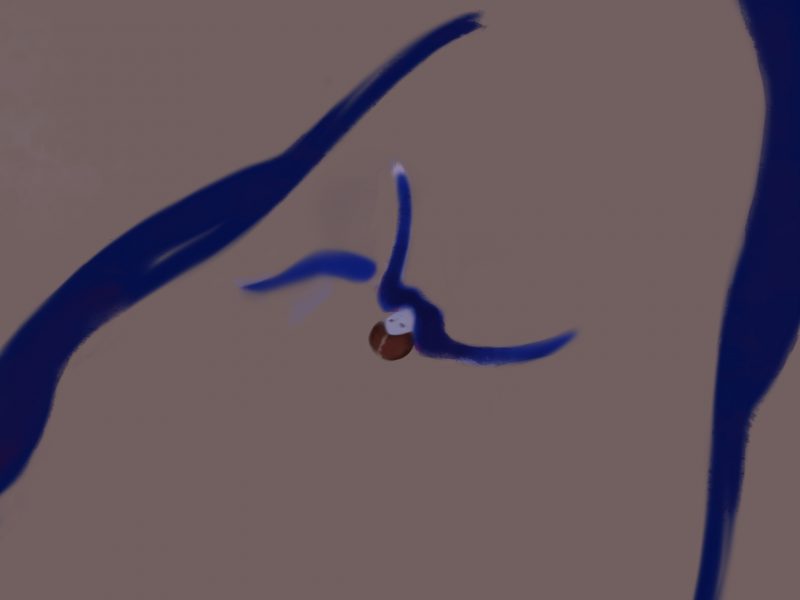
The actress resides in Rome. The last film she appeared in was also the only she directed. She retired in the early 1980s. Sometime after she was diagnosed with Alzheimer’s.
Her grandmother, who was an artist, had the same disease. The actress was still young when her grandmother started to unravel.
Family, which had been so important to her grandmother, became a site of anxiety. The disease wore away names and relationships. She’d shriek when an uncle or a nephew appeared and accuse them of being criminals come to steal her rings.
However, her grandmother did still seem to recognize a few, her granddaughter among them. She’d flap her hands, cry,
“precious!” then touch the actress’s cheeks.
Her grandmother’s hands plucked and fiddled. One hand wrung the other out.
One day, the actress brought her grandmother some pastels and paper. Her grandmother took them without hesitation and made a series of bold and graceful drawings. The last work she ever produced.
On the island, years after her grandmother’s death, waves made lines in the fine brown sand.
The actress feared becoming similar, not to anything in particular, just similar. Like a gauze.
She paced and waved for the camera.
In the film you see she’s not waving, she’d drowning.
Or she’s not drowning, she’s disappearing.
Or she’s not disappearing, she’s acting.
She’s acting when she waves. The viewer knows this but forgets. The figures on the boat aren’t actors, but real people who wonder aloud if the woman on the beach has lost something.
In this sequence the director blurs life and performance. Notice it’s not even the actress in the reverse shot. When the camera moves from shore to boat you can tell it’s not the same woman waving. That woman wears entirely different colors.
It’s not even her.
Leah Horowitz is an art director and animator living in Queens, New York. Her work has been published by many platforms for a variety of different contexts. She explores ways to show messages in a visual manner. To see more of what she does, you can follow her on instagram (@seqls).
Joni Murphy is a writer from New Mexico who lives in New York. Her novel, Double Teenage, published by BookThug, was named one of The Globe and Mail’s 100 best books of 2016.